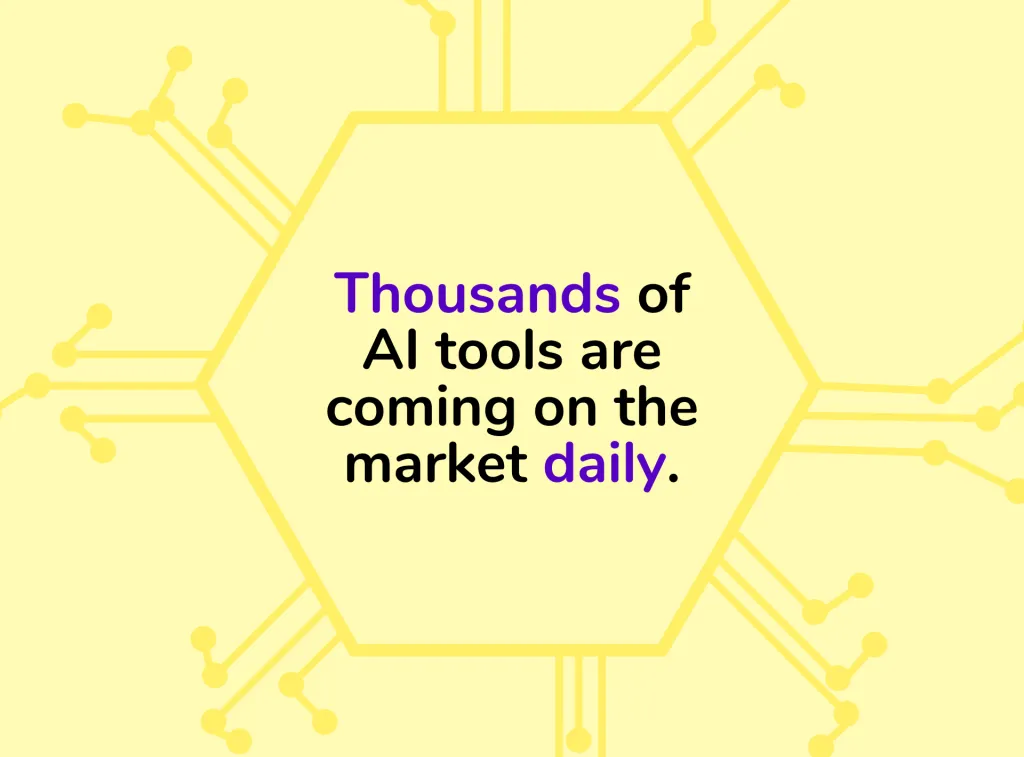Artificial intelligence (AI) has emerged as a cornerstone, shaping industries and everyday lives. One frequently asked question is: ‘How many AI tools exist today?’ While providing an exact number is a Herculean task, we can explore the landscape to appreciate its vastness and diversity due to AI’s dynamic and continuously evolving nature.
The Challenge of Quantifying AI Tools
Quantifying the exact number of AI tools globally is akin to counting stars in an ever-expanding universe. The AI landscape is not static; it’s a vibrant field characterized by constant innovation, mergers, acquisitions, and the ceaseless emergence of new startups.
Diverse Sectors
AI tools are not confined to the tech industry; they permeate various sectors like healthcare, finance, education, and automotive, each with specialized AI applications.
Open Source and Commercial Platforms
The distinction between open-source platforms like TensorFlow and commercial offerings from tech giants like AWS or Google Cloud AI adds layers to this count. The open-source community significantly contributes to the proliferation of AI tools.
Startups and Niche Innovations
The startup ecosystem is particularly dynamic, with new companies continually introducing innovative AI tools. These range from advanced analytics solutions to niche AI applications tailored to specific industry needs.
Custom AI Solutions
Beyond commercially available tools, many organizations develop bespoke AI solutions for internal use, which often need to be accounted for in public tallies.
Academic Contributions
Universities and research institutions also contribute to the AI tool landscape, often developing specialized tools for research purposes that may eventually enter the commercial realm.
Trends of AI
The rapid advancement of generative AI is set to mark a significant shift in the enterprise landscape. According to a recent statement by Gartner, it’s predicted that by 2026, over 80% of enterprises will have either utilized generative AI APIs or deployed applications enabled by generative AI.
This projection underscores a growing trend toward embracing AI’s generative capabilities, including creating original content, designing products, and automating various tasks. Adopting these AI technologies is expected to revolutionize how businesses operate, innovate, and compete, reflecting a broader shift towards more intelligent, efficient, and creative use of technology in the corporate world.
What are the Future Directions?
As we look towards the future, several key trends and directions are emerging in the field of artificial intelligence (AI). These trends not only highlight the potential growth areas but also hint at the transformative impact AI is expected to have across various sectors.
Widespread Adoption of Generative AI
Following Gartner’s projection that over 80% of enterprises will utilize generative AI by 2026, we can expect a surge in AI-driven content creation, product design, and process automation. This encompasses everything from AI-authored articles and reports to AI-generated design and multimedia content.
AI Ethics and Governance
With the increasing deployment of AI, ethical considerations and governance will become more crucial. Enterprises will need to address issues related to data privacy, bias in AI algorithms, and the ethical implications of AI decisions. The development of frameworks and guidelines for responsible AI use will be a key focus.
AI in Decision Making
AI’s role in augmenting decision-making processes will expand. By analyzing a large amount of data and identifying patterns, AI can provide insights that support more informed and efficient decision-making in businesses, healthcare, finance, and other sectors.
Personalization at Scale
AI will enable hyper-personalization in marketing, customer service, and product development. By understanding individual preferences and behaviors, businesses can tailor their offerings to each customer, enhancing the user experience and increasing engagement.
AI and IoT Convergence
Integrating AI with the Internet of Things (IoT) will lead to smarter and more efficient systems. This will be particularly evident in smart cities, industrial automation, and home automation, where AI can optimize operations and improve energy efficiency.
Advancements in Natural Language Processing (NLP)
NLP will continue to evolve, improving the ability of machines to understand and interact with human language. This will enhance applications such as chatbots, virtual assistants, and language translation services.
AI in Healthcare
AI’s role in healthcare will become more prominent, with applications ranging from diagnostics and personalized medicine to robotic surgery and patient care management.
Democratization of AI
As AI tools become more user-friendly and accessible, we will see a democratization of AI technology. This means that more people without specialized technical knowledge can leverage AI for various applications, fostering innovation and creativity across different fields.
Edge AI
The growth of edge computing, where AI processes are run on local devices instead of centralized servers, will enhance the speed and efficiency of AI applications, especially in areas where real-time processing is crucial.
AI in Education
The education sector will increasingly adopt AI for personalized learning, automated grading, and intelligent tutoring systems, providing more customized and effective student learning experiences.
Conclusion
In conclusion, while it’s challenging to pinpoint an exact number of AI tools, it’s clear that the ecosystem is vast and varied, encompassing some of the best free AI tools available. This diversity reflects the broad applicability and rapidly evolving nature of AI technology. As we look to the future, we can expect this landscape to continue expanding, with AI tools becoming more integrated into various facets of our personal and professional lives. The key takeaway is that AI is not a static field but a dynamic and ever-evolving one.
